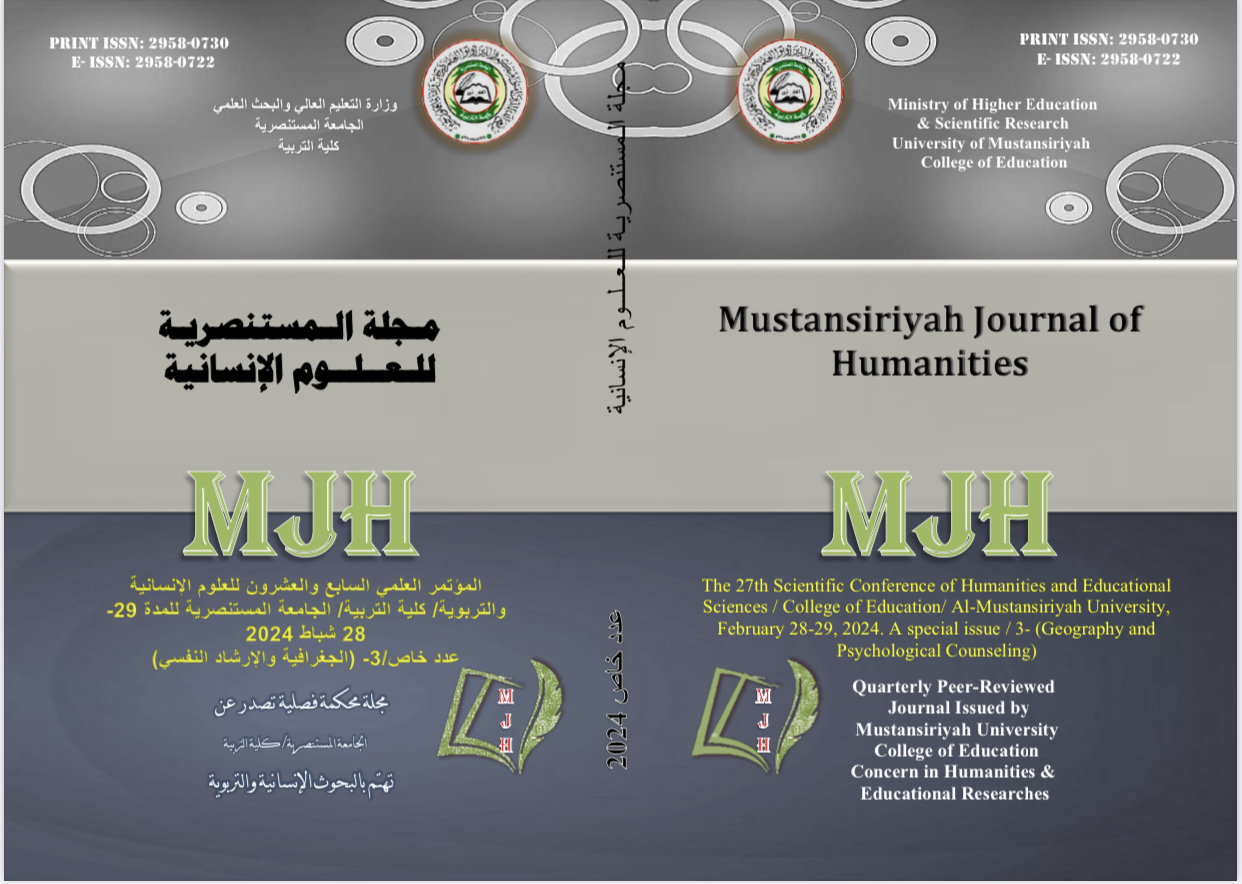Cartographic modeling to estimate the volume of torrent flow in the Wadi Zalm Basin Governorate using RS&GIS
DOI:
https://doi.org/10.47831/mjh.v3iخاص.494Abstract
Wadi Zalm branch is located in Sulaymaniyah Governorate within Halabja District, private arms with an area of (232.7) km2. It was agreed to conduct research to estimate the volume of torrents in the Wadi Al-Zalm Basin using cartographic symmetry and relying on the Snyder model, which is one of the approved studies to estimate the volume of torrents in the study area due to its reliance on basin data in the areas that have been recorded, as well as recorded data on rainstorms, through the use of hydrological modeling by The South between the digital computer model for the company’s uses to digital maps using geographic information systems (GIS) with company boundaries and revenues. Morphological measurement based on image analysis and social visuals and using the digital elevation model (DEM) with an accuracy of 30 m. To derive the valley network and classify it according to the Strahler stream order, using the ArcGIS 10.8 hydrology toolbox, as it reached (6) orders, determine the boundaries of the secondary basins as it reached (2) basins, and extract the lengths of the valleys using the ArcGIS10.8 -Measure tool.
The use of remote sensing techniques and geographic information systems represented by modern digital data such as satellite visuals (Landsat 8) and the digital elevation model (DEM) to estimate flood risks in the environment of the (AEC map10.8) program, and to determine the morphometric variables used in applying the Snyder model to estimate flood risks through values. Calculated and represented by (the drainage area of the basin A, the length of the main stream Lb, the distance between the mouth of the basin and the center of gravity Lca). Through the outputs of these values, a Snyder model was built to estimate the risk of floods using modern techniques (RS & GIS). The results showed that most of the lands of the basin fall within the high risk range, with an area of (163.9) km2, representing (70.43)% of the area of the study area.





